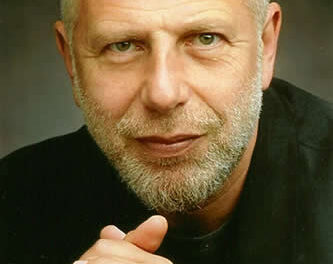The North Carolina Symphony presented its fourth and final performance of “Viva Italia” in Chapel Hill’s Memorial Hall, offering postcards from composers who visited Italy at some point in their careers. Though none was actually Italian, each work captured some quality of the country that the composer found important. Resident Conductor William Henry Curry explained that each composer was “a tourist,” writing home about what he saw on his journey.
This performance not only captured the spirit of Italy but also gave members of the NCS a chance to flex their muscles. The first two works were flashy and athletic for all strings and winds, featuring jovial melodies and raucous dances that seemed almost out of control but of course were carefully rehearsed to sound that way. These works, Hector Berlioz’s “Roman Carnival” Overture, Op. 9, and Felix Mendelssohn’s “Italian” Symphony No. 4 in A, Op. 90, both feature popular Italian dance forms, including the saltarello, a lively, triple-meter folk dance that might have been heard in Rome. Both dances drew the audience’s appreciation and applause immediately upon the final chords.
After the intermission, the orchestra resumed with the finale from Piotor Ilyich Tchaikovsky’s Souvenir de Florence, Op. 70, originally written for string sextet (two violins, two violas, and two cellos). Curry chose to expand the sextet into a larger ensemble with six fuller parts, adding a lone string bass to reinforce the lower melodies. The piece retained its chamber ensemble quality, refined and still very emotional. Each section was very exposed, but the players met the challenge head-on.
Hugo Wolf’s Serenade for Strings calls for a slightly fuller orchestration, including small wind and brass sections. Principal violist Anton Jivaev played a delicate and expressive solo, representing the entreaties of a suitor to a coquettish lady, depicted in echoes of the melody by flute, clarinet, and oboe. This was the most complex interweaving of parts played at this concert, closely rivaled by the second and third movements of the Mendelssohn, which were also very rich and sensitive.
The final two pieces, Johann Strauss II’s “Where the Lemon Trees Bloom” Waltzes, Op. 364, and Tchaikovsky’s Capriccio Italien, Op. 45, returned to Italian dance melodies. Strauss’ waltzes captured the aromatic, lush countryside of Italy, painting the varying landscape in the collection of tones and moods. Tchaikovsky’s Capriccio features the full orchestra, including trombones and bass trombone, tuba, timpani as well as other percussion, harp, winds, and strings. The effect of the full orchestra after the smaller forces used earlier showed clever planning, for the resulting effect was to present, as indicated in the program notes, “one of the most rousing displays of orchestral sonority in all of Romantic music.” The fullness of the brass at the beginning is unmatchable, complemented by the sweet, swirling lines of the winds, and finally accompanied in swells by the strings.
The North Carolina Symphony gave a very challenging concert this time, but utilized all of its strengths – excellent technical ability by the strings, committed soloists, and delightful timbral interplay by the winds and brass. The whole orchestra may have been exhausted as they took their final bows, but they showed no sign of this while playing.
The NC Symphony, conducted by Grant Llewellyn, will present Carl Orff’s Carmina Burana in Meymandi Concert Hall in Raleigh May 11 and 12 at 8:00 p.m. The program will include Francis Poulenc’s Gloria and the Orff, performed with the North Carolina Master Chorale, the Capital City Girls Choir, and featured soloists. There will be a pre-concert lecture preceding the May 11 performance. For details, see our calendar.












